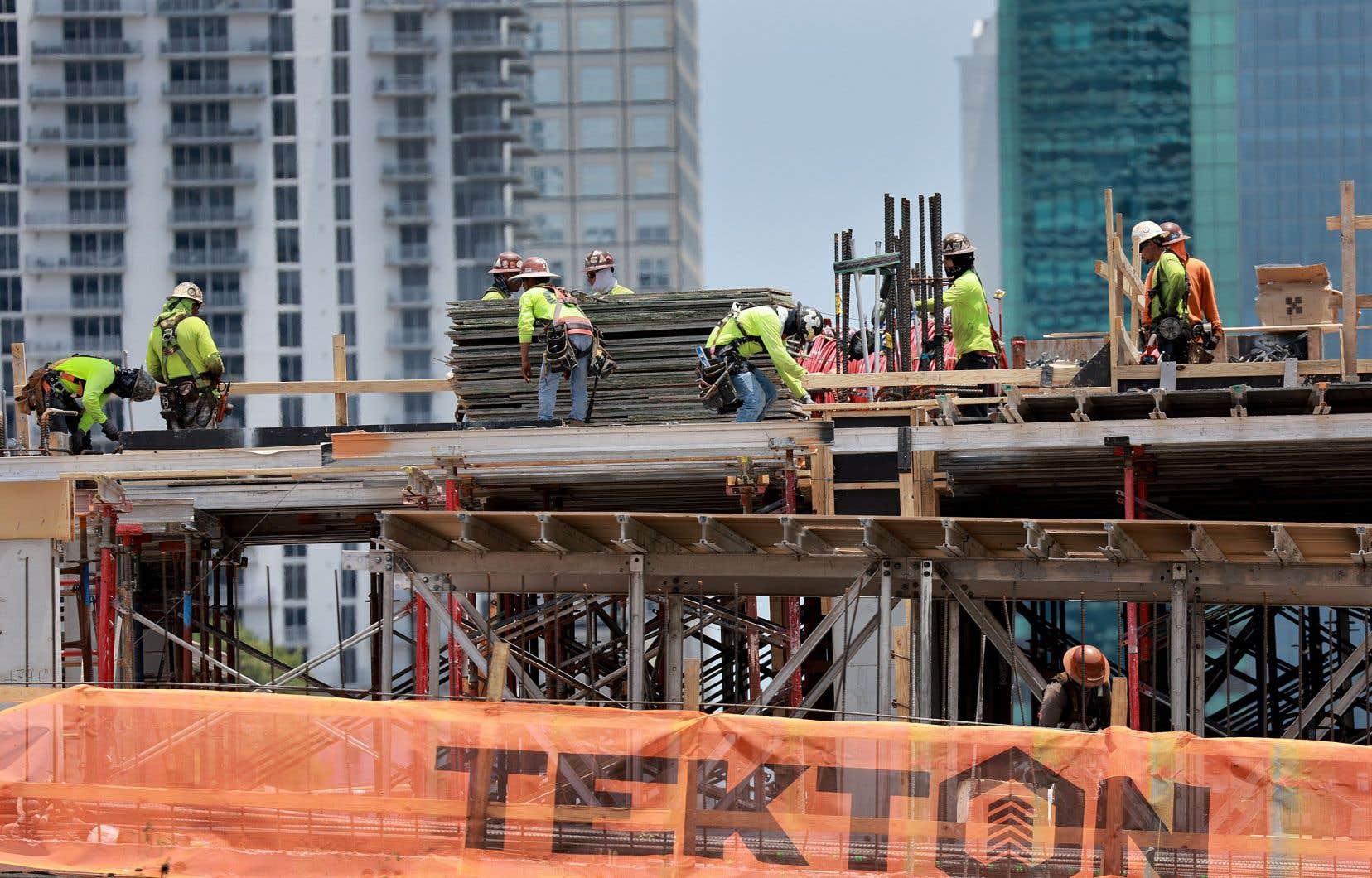The labor market remained very strong in May in the United States, with job creations much higher than expected, and a historically low unemployment rate, while wage growth slowed, good news for the fight against inflation.
In May, 339,000 jobs were created in the United States, the Labor Department announced on Friday, when only 190,000 were expected, according to the consensus of MarketWatch.
Jobs have been created in the professional and business services sectors, in government-related jobs, health care, construction, transport and logistics, and social assistance, details the Department of Labor.
In addition, job creations for March and April were revised upwards, to 217,000 and 294,000 respectively, ie, over these two months, 93,000 more jobs were created than initially announced.
The unemployment rate, on the other hand, rose a little more than expected, standing at 3.7% (+0.3 points), when analysts were expecting 3.5%. It has been at its highest since October 2007, but remains very low.
“Job growth continues at a rapid pace, but wage pressures are not keeping up,” notes Rubeela Farooqi, chief economist for HFE, noting that the rise in the average hourly wage “has slowed down”.
This increase in wages, in fact, led the American central bank (Fed), which is maneuvering to slow down high inflation in the United States, to take a particular interest in the employment situation.
Wages
Retirements during the pandemic, childcare difficulties, but also very low immigration, have, for more than two years, led to a shortage of workers.
This prompted employers to raise wages to attract applicants and retain staff, which helped to drive up inflation.
The rate of participation in the labor market remains stable, however, at 62.6%, details the Department of Labor.
In the private sector alone, job creations slowed down a little in May, but remain at a high level, with wide disparities between sectors, according to the monthly ADP / Stanford Lab survey published on Thursday.
And these data also showed a much weaker increase in wages: “wage-induced inflation could be less of a concern for the economy despite robust hiring,” said Nela Richardson, chief economist of ADP, quoted in the communicated.
Since March 2022, to achieve its objective, the Fed has raised its key rates. This leads the banks to raise the cost of the loans they offer to households and companies, to slow down consumption and investment, and ultimately to ease the pressure on prices.
At its next meeting, on June 13 and 14, it could choose to raise the rates for an 11e in a row, or take a break to observe the effects of previous hikes and avoid slowing economic activity too much, in order to avoid recession.
Immigration
Philadelphia Fed President Patrick Harker stressed on Thursday that “there must also be a sensible immigration policy to bring the people we need into the country.”
“We just have to recognize that there are only two solutions to get more people into the labor market, to bring back (into employment) more people who were on the sidelines, or to bring in more people in the country,” he told a NABE (National Association for Business Economics) conference.
However, the job market seems to be showing signs of slowing down.
Thus, weekly jobless claims recorded a second week of increase in a row at the end of May, according to figures from the Labor Department.
And, while employers still have “difficulty finding workers across a wide range of skill levels and economic sectors,” they are seeing “easier hiring in construction, transportation and finance,” according to this “Beige Book” (Beige Book), an activity barometer published on Wednesday by the Fed.
